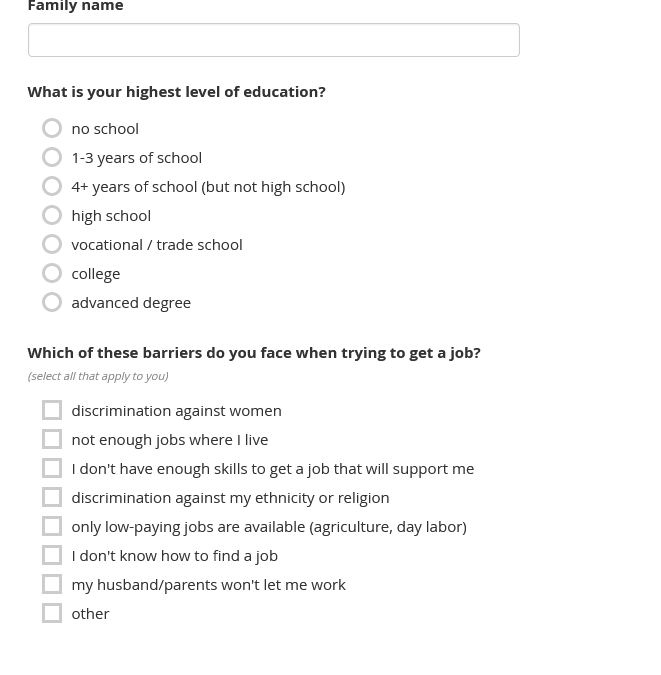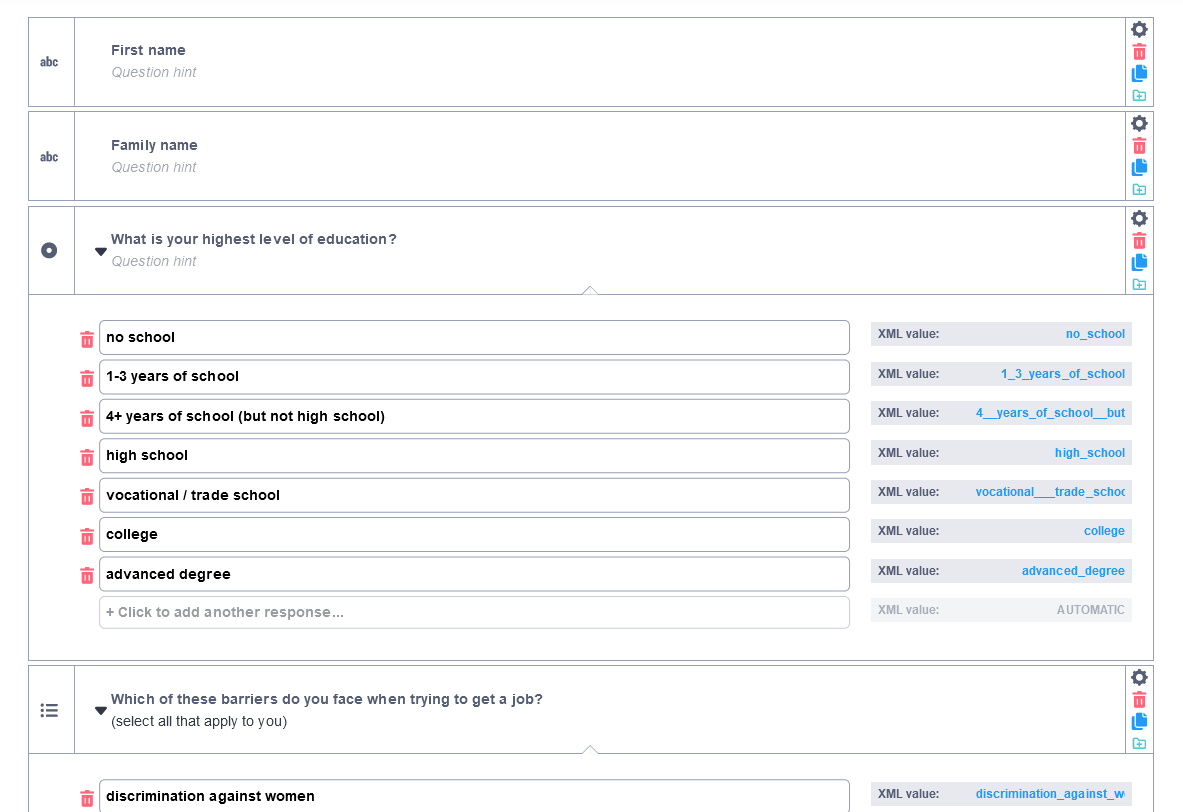Data collection for development projects
In rural areas far from internet service or in cities with electricity or internet access disrupted by violence or shortages, some #development projects still use paper and pen forms to collect information – primary stakeholder demographics, background and needs; types and amount of services provided; types and amounts of services received; opinions on whether there has been an improvement in the situation being addressed by the project (access to food or clean water, improvement of civic engagement, increase of economic opportunities for disadvantaged groups).
But technology exists that can be used in areas without internet access so that monitoring and evaluation (#M&E) data can be collected digitally.
Introducing KoboToolbox
One popular platform is KoboToolbox, developed by the United Nations for #humanitarian purposes. With Kobo, you can easily make “surveys” (as they’re called) to collect both programmatic information (register participants, what services they got) and #outcome data (Was the program successful? Were the outcomes achieved?). It’s better for quantitative data than qualitative (though videos, audio records and photos can be taken via Kobo).
One important feature is that surveys can be filled out online – using a URL – or offline – the survey can be downloaded onto a laptop, iPad or Smartphone and filled out repeatedly, with the responses encrypted and stored on the device; when the device is brought back to a place with internet access, the data is uploaded to Kobo’s cloud server.
Another important feature of Kobo is that it is free. Any staffperson can make an account and make their own surveys – very useful to cash-strapped #NGOs and #CSOs
Kobo surveys (forms) can be filled out online as well as offline for areas without internet connection. Also, Kobo is free.
Weaknesses
Kobo does have some drawbacks, one of which is that it’s harder to maintain a case file on program participants. Unlike other platforms, such as Commcare, a record isn’t set up for each program participant that you can update over time (2022 – received services A & B; 2023 – received services A & C). This is because the data is automatically uploaded to Kobo’s servers for security purposes and is automatically removed from the device.
Regardless of what digital survey tool is used, it’s important that you “go digital” for #monitoring and #steering (#M&E), so that data will be available immediately, human error from data entry will be reduced and data can easily be used for graphs and dashboards to show patterns and trends (projects in regions X & Y are doing well, but not those in region Z; let’s investigate why) for both project management and accountability.
For more information on going digital for M&E, check out my blog on my work with Helvetas, where I’ve been supporting 30+ country offices to learn and use #KoboToolbox and #PowerBI (for dashboards).


